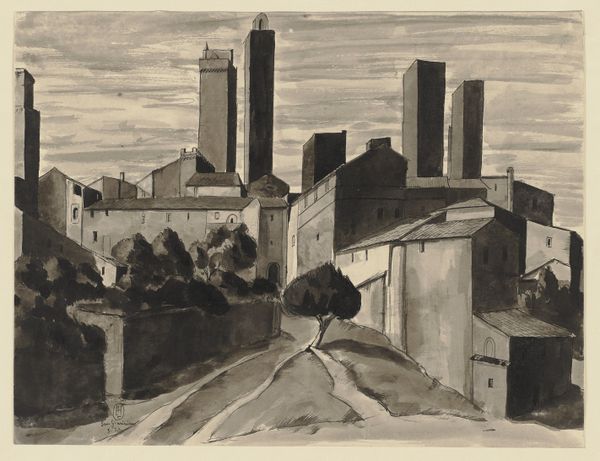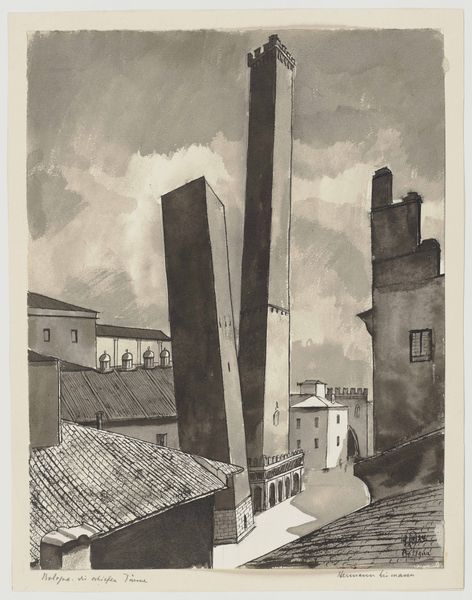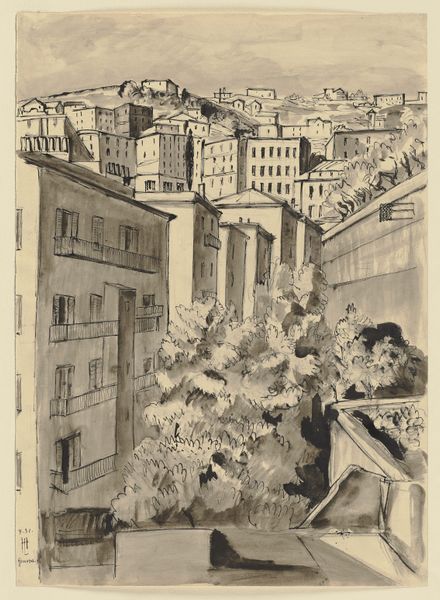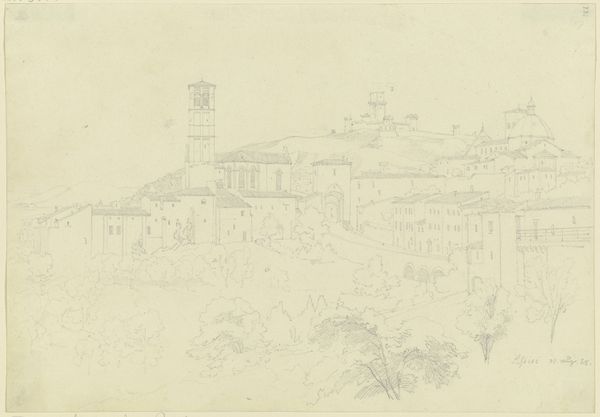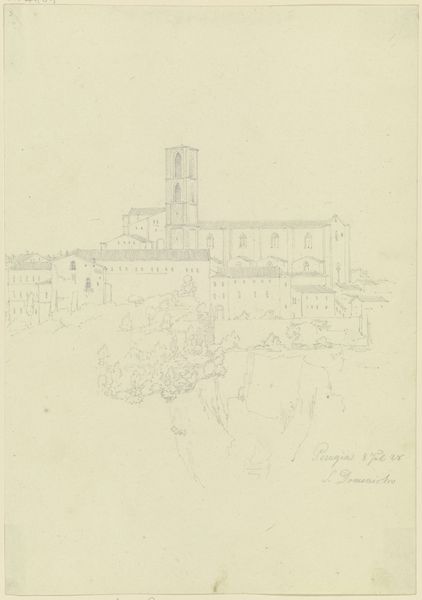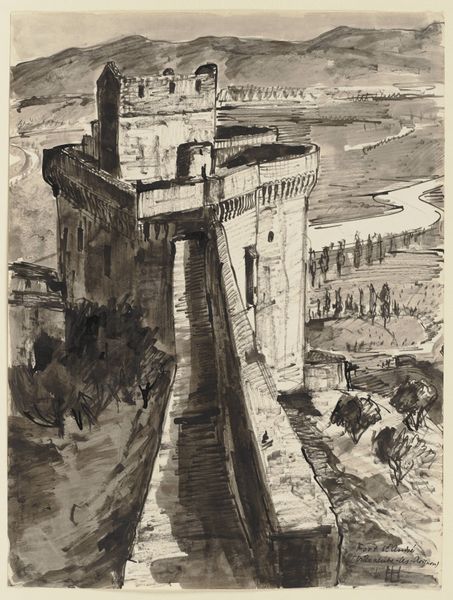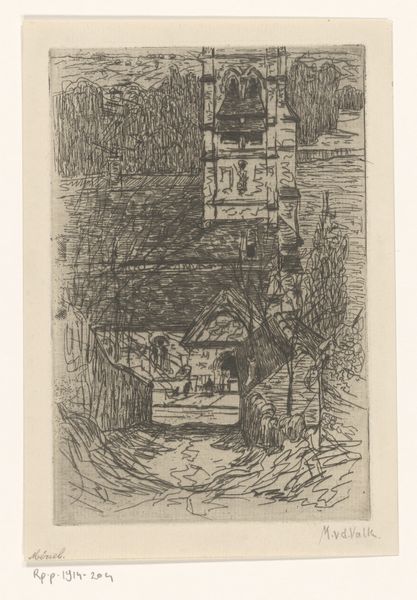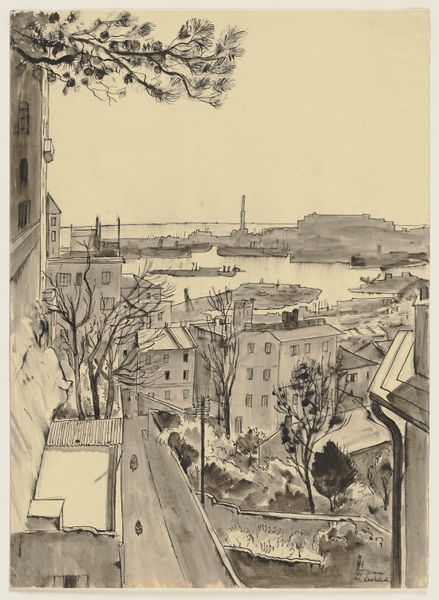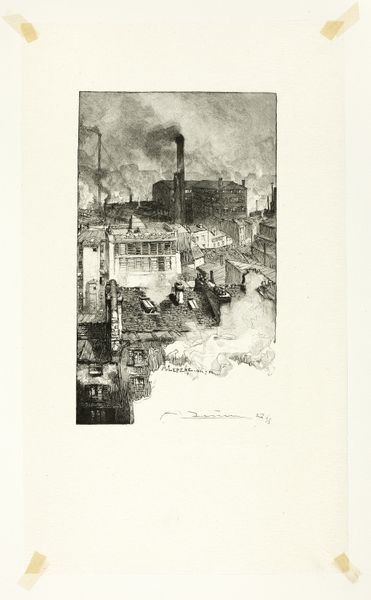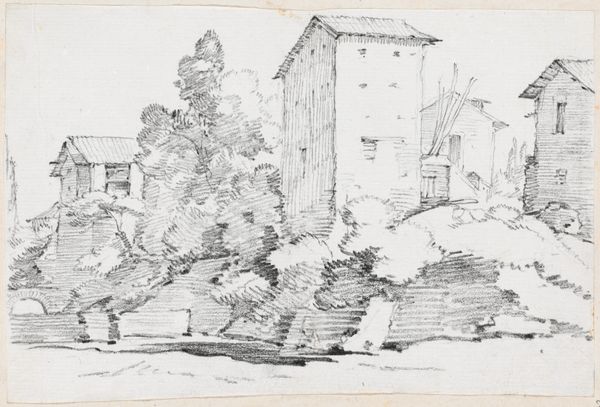
drawing, plein-air, paper, ink
#
drawing
#
plein-air
#
landscape
#
paper
#
ink
#
cityscape
Copyright: Public Domain
Curator: Gazing at this drawing, the first thing that strikes me is the stillness. Despite all those rigid architectural shapes, there's something profoundly quiet about the scene. What do you feel when you look at it? Editor: It feels timeless, somehow. As if these towers have stood there forever, indifferent to our fleeting lives. We are observing "San Gimignano," a drawing made with ink on paper around 1923 by Hermann Lismann. The work currently resides here in the Städel Museum collection. Curator: Lismann's use of ink gives it such a graphic quality, doesn't it? The towers jut out of the composition with stark clarity, almost like monolithic giants. But it’s also the landscape—those rooftops and walls almost fading away—that evokes a poignant impermanence. Editor: These weren't just random towers though; they symbolized the wealth and power of prominent families. They represented civic pride but were also indicative of fierce competition and conflict within the city. San Gimignano's profile became its brand, a visible demonstration of success and control. Curator: The way Lismann chooses to present San Gimignano through a drawing made "en plein air," as we say it in French—open air—it’s like capturing a fleeting moment in time. Almost an attempt to record not just what he saw, but what it felt like to witness. You know, the light, the shadows, that certain crispness in the Tuscan air... Editor: I wonder what Lismann thought about the shift toward Fascist ideals during that period. The drawing, stripped down to basic elements, it mirrors a turn away from complexity, doesn't it? There is also the historical context: San Gimignano was already recognized as a place with architectural relevance. Lismann almost certainly knew of its historical role when drawing it. Curator: Oh, that’s an interesting angle! I see how the graphic reduction could be interpreted as mirroring a societal trend. Though I would have said that he saw San Gimignano through the light that only Tuscany knows. You can tell it was executed at once, spontaneously. As if he just felt impelled to grab the motif with immediacy. Editor: It’s striking to consider that his perspective from almost a century ago continues to shape how the modern viewer engages with that heritage today, don’t you agree? Curator: Absolutely. The dialogue between what persists and what fades away – it is precisely what makes the image linger long after we’ve turned away from it. Thank you!
Comments
No comments
Be the first to comment and join the conversation on the ultimate creative platform.

